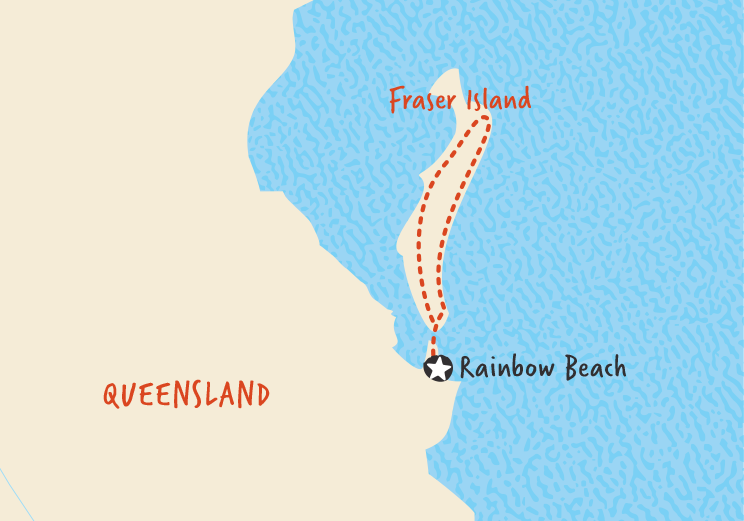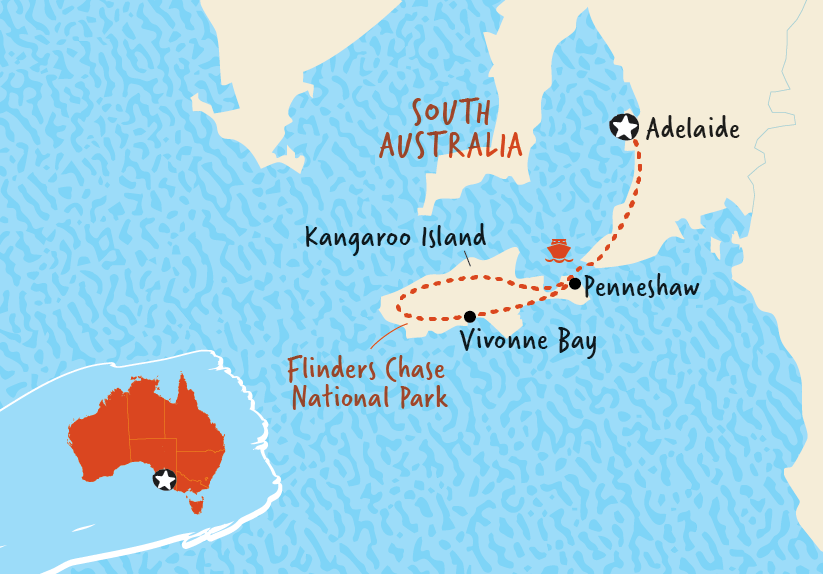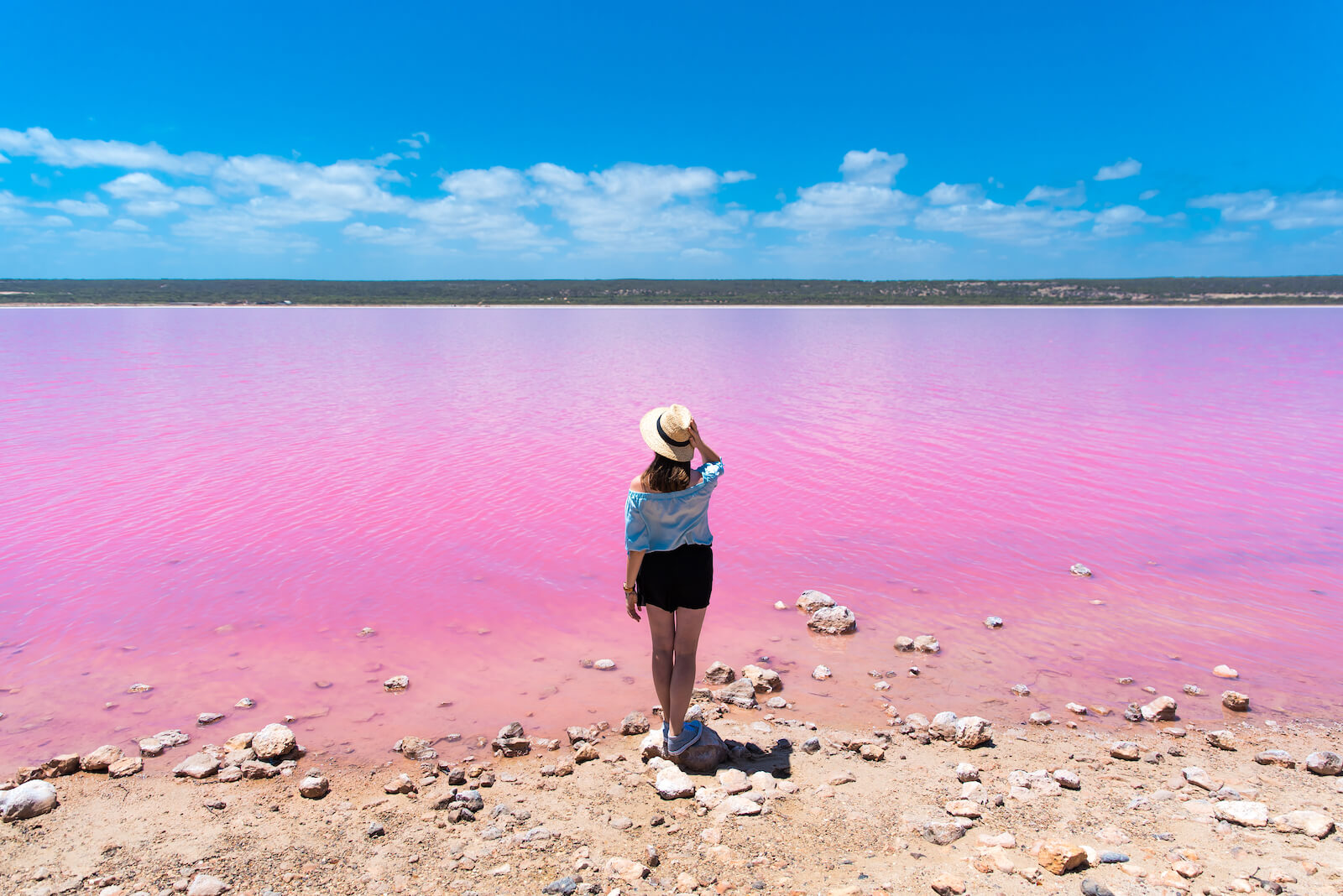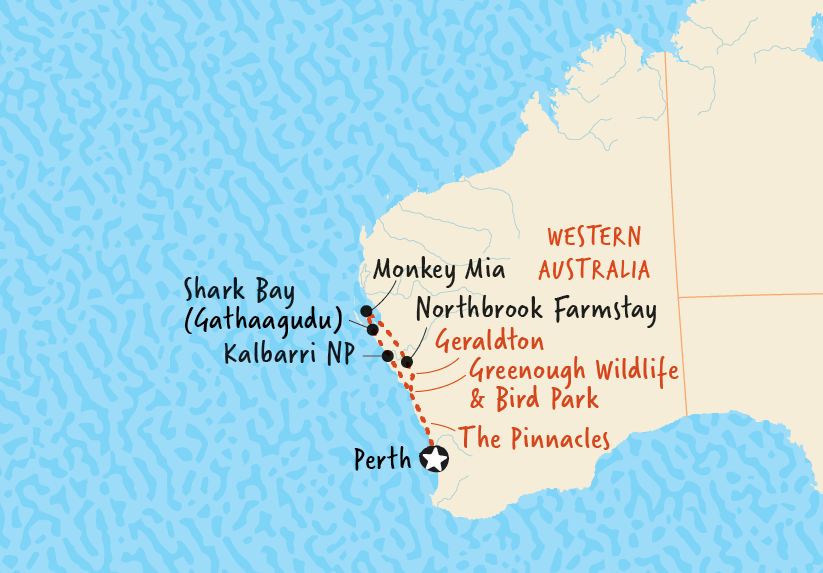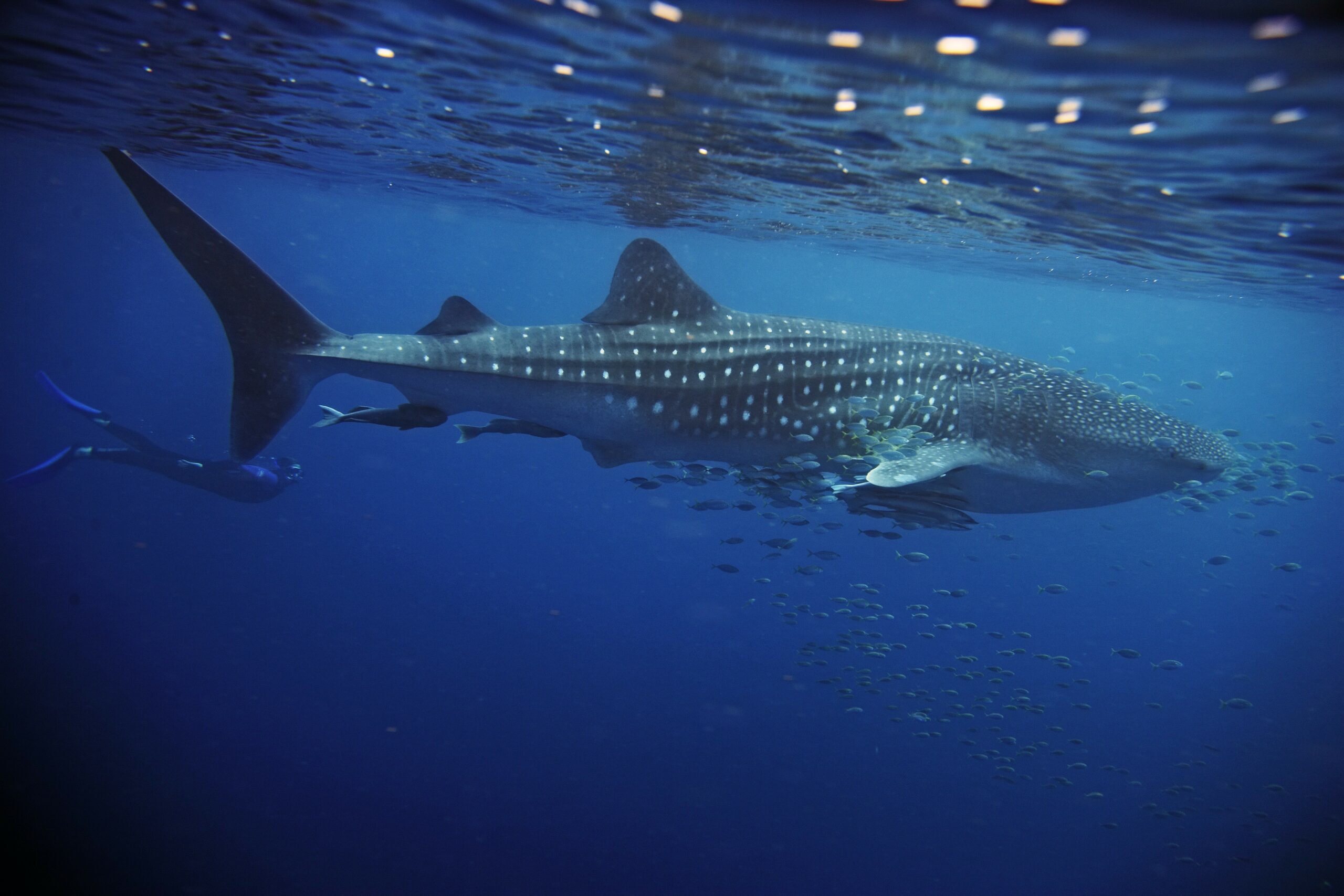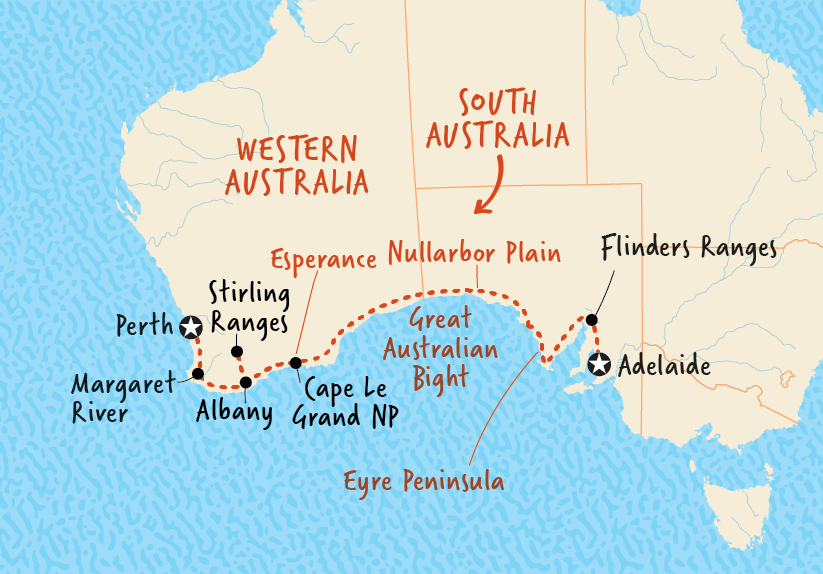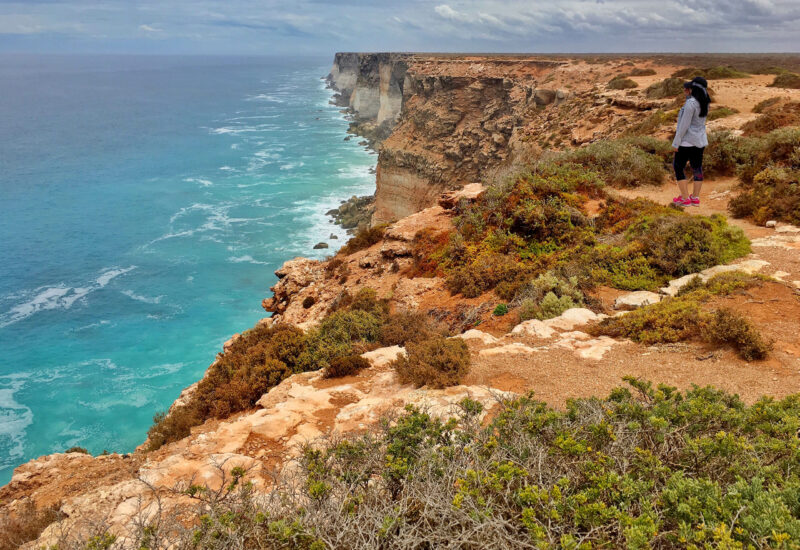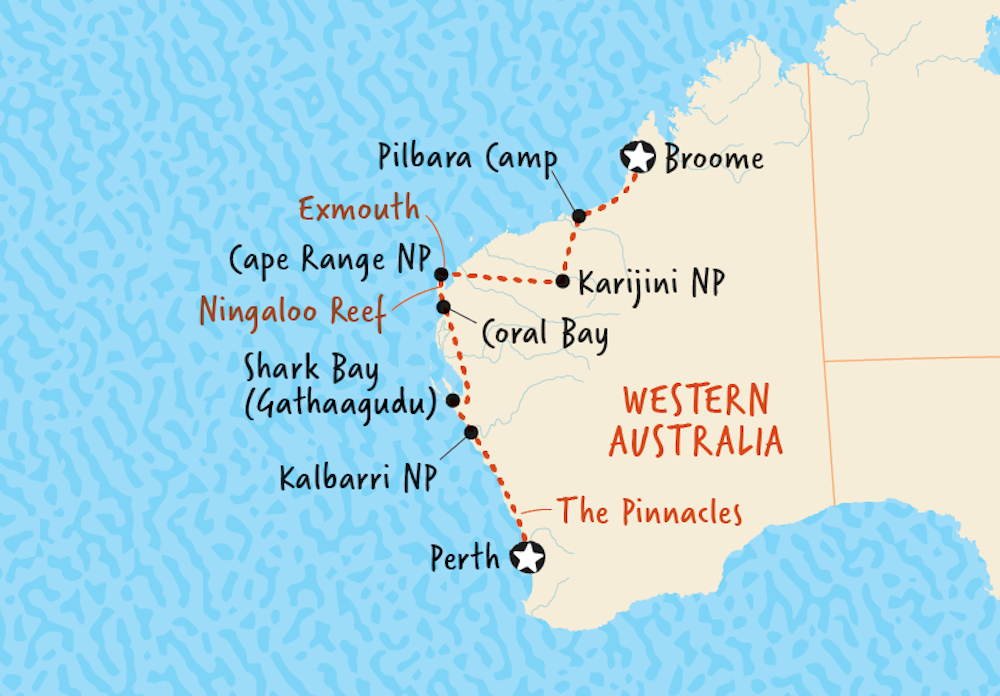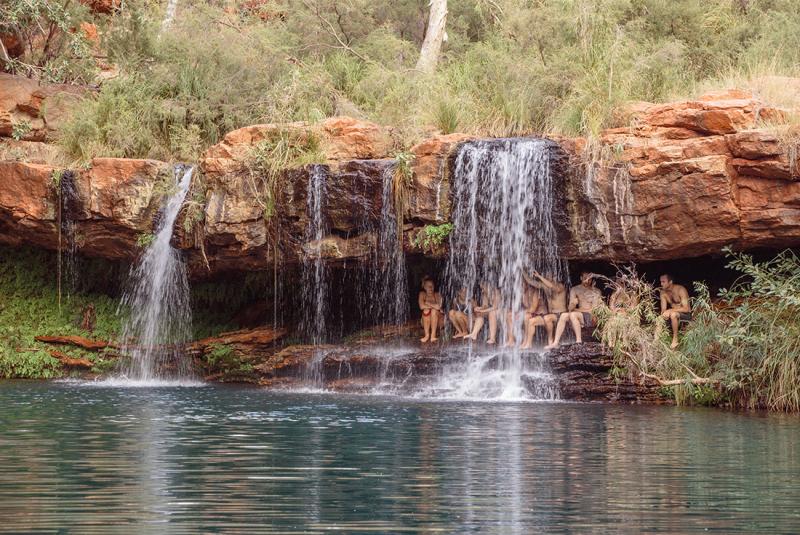The great majority of Australia’s mammals, reptiles and amphibians (over 80%) are found nowhere else on earth.
Many of these critters – like kangaroos, possums and wombats – are widely dispersed about the continent and relatively easy to spot. Others, being either shy, rare, migratory, endangered, endemic to small areas, or a combination of these traits, are famously elusive – platypuses, dingoes, Tassie Devils and whale sharks best fit this bill. There are introduced species one would never expect to find in Australia, like camels, buffalo and foxes; friendly animals, like dolphins, quokkas and wallabies; famously unfriendly ones (hi, world’s biggest crocodiles and most poisonous snakes); and, last and least of all, a bunch of creatures so rarely spotted as to have achieved legend status. If you snap photographic evidence of the mythical bunyip, fearsome drop-bear, (supposedly) extinct Tasmanian Tiger or fabled Gippsland panther, please send it our way.
Our wildlife tours
2 Days
From
$499
Our youth-style tag-along 4WD adventure is a great way to experience the…
3 Days
From
$569
Our 3 Day 2 Night K’gari (Fraser Island) tours have the most…
3 Days
From
$895
Short on time? This epic Top End 3-day tour hits some epic…
3 Days
From
$895
Unearth Australia’s third-largest island on an adventure tour from Adelaide. Kangaroo Island,…
4 Days
From
$1,195
The only way to see Western Australia’s Coral Coast, in only 4…
6 Days
From
$1,395
The southwestern reaches of Western Australia are defined by rolling vineyards, lush…
7 Days
From
$1,595
The only way to capture the Best of the West, in less…
10 Days
From
$2,895
Check out Australia’s rugged west coast on a 10-day return overland adventure…
5 Days
From
$1,526
Discover Australia’s Top End on a roundtrip from Darwin. Meet Traditional Owners,…
10 Days
From
$2,295
Wide, open spaces, arid lands, pristine beaches, lush bushland, abundant wildlife and…
10 Days
From
$2,295
Escape to secluded beaches where the white sand squeaks and the sunburnt…
10 Days
From
$2,516
Soak up the laidback West Coast of Australia’s on a 10-day adventure…
10 Days
From
$2,895
Check out Australia’s rugged west coast on a 10-day overland adventure from…
Meet some Australian wildlife
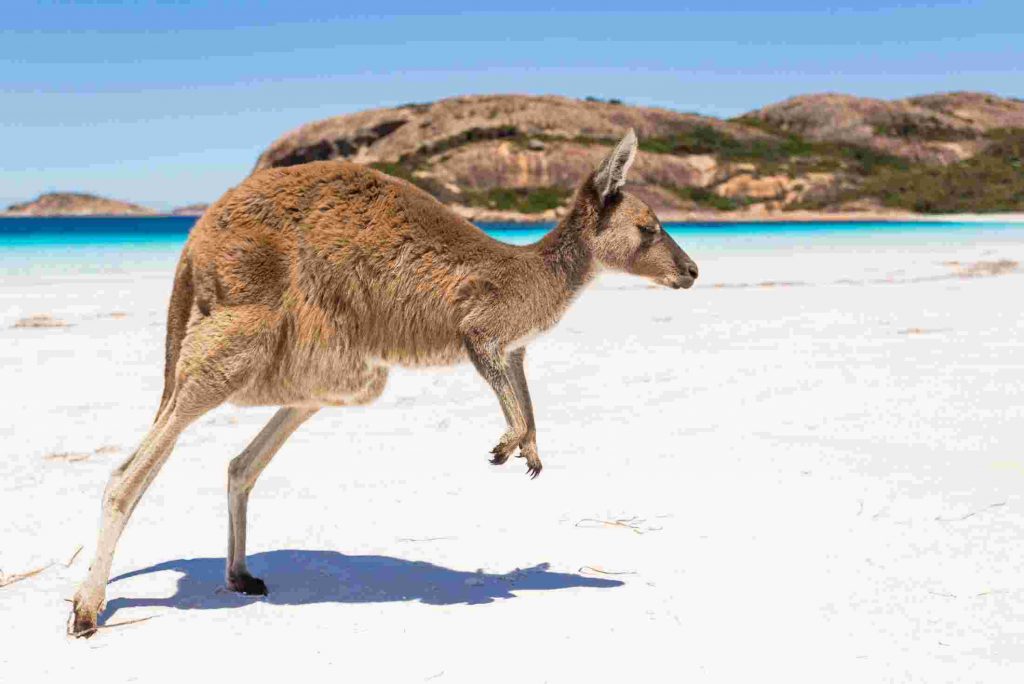
Kangaroos
They live in forests and deserts, on the Australian Coat of Arms and restaurant menus across Australia – yep, Aussies aren’t beyond eating their national emblems if they taste good. Australia’s two most common species of ‘roo are the Red – the world’s largest marsupial – and the Eastern Grey.
Where to spot them: With the exception of Tassie and some coastal parts of Victoria and WA, Red Kangaroos can be found hopping right around Australia. The Eastern Grey Kangaroo is most commonly spotted along Australia’s east coast.
When to spot them: The best time of day to spot a roo is at dawn or dusk, though they can often also be seen during daylight hours.

Whale Sharks
Know what’s as big as a whale? The Chrysler in The B52s hit song Love Shack. Know what else? A shark. Terrified? Don’t be. Despite a mouth measuring 1.5 metres and furnished with 350 rows of teeth, the whale shark is totally harmless to humans.
When and where to spot them: Whale sharks migrate through the warm waters off the Western Australia coastline – especially around Ningaloo Reef and Kalbarri – between April and June.

Dingo
Weird fact: mother dingoes often eat their babies’ droppings (apparently it’s a hydrating snack that helps them produce milk). Some other oddities of the dingo are that they howl instead of bark and that many dingo couplings stay partners for life. Dingoes are protected in national parks, World Heritage areas, reserves and the ACT, but are considered a pest almost everywhere else.
Where to spot them: Dingoes exist in every Australian state and territory other than Tasmania. They’re more commonly found in the hotter, drier regions and a sizeable population lives on Fraser Island.
When to spot them: Dingoes are both diurnal and nocturnal, so you’re just as likely to come across one during the day as the night.

Crocodiles
Australia’s saltwater crocodiles are aggressive, enormous (some have grown up to seven metres long), and will eat just about anything. Freshwater crocs are much smaller, usually growing to around two metres in length. They feed on fish, frogs and birds, and, unlike the saltwater croc, won’t have a go at humans (though they may bite if provoked). Confusingly, freshwater and saltwater crocodiles both live in fresh- and saltwater.
Where to spot them: From a boat, ideally. If you see one while you’re in water, hop out quick-sticks – especially if it looks like a saltie. Both salties and freshies are exclusively found in Australia’s north (Queensland, Northern Territory and the Kimberley). Salties can often be seen in the sea; freshies are more commonly found inland.
When to spot them: Year-round and at any hour of the day or night.

Echidnas
A close relative of the (equally odd) platypus, the echidna is one of only very few mammals to lay eggs. After a gestation period of about three weeks, the female lays an egg – which she then stores away in her pouch. Fast-forward 10 days and out pops a… puggle. If there’s a more adorable name for a baby anything, we’ve not heard it yet.
Where to spot them: Echidnas are Australia’s most widespread native mammal. Ranging right across the continent, they can be found in every state and territory – usually holed up in a hollow log or under some shrubbery.
When to spot them: In warmer months and habitats, echidnas tend to be nocturnal. At higher elevations, in more temperate climates and during the winter months, they tend to seek out the sun by doing their foraging during daylight hours.

Tassie Devil
Think of the crankiest Jack Russell Terrier you’ve ever met, double it, and you’re getting close to knowing the temperament of a Tasmanian Devil. With screeches scary enough to wake the dead, immensely powerful jaws and one extremely stinky odor, it’s clear how they got their name.
Where to spot them: While they used to hang out on mainland Australia, Tassie Devils are now only found on the Apple Isle.
When to spot them: Nighttime. These nocturnal critters hide out during the day in hollow logs and holes in the ground, venturing out at night to hunt.

Penguins
Each night, along the sandy shores of Phillip Island, dozens of tiny penguins emerge from the water to march their way back to bed. Fairy penguins (or ‘little penguins’, as they’re also known) are the world’s smallest penguins, standing a mere 30 cm in height and weighing in at one almighty kilogram.
Where to spot them: These tiny fellas prefer the Southern Hemisphere’s cooler climes. Bicheno in Tasmania and Phillip Island or St. Kilda in Victoria are reliable places to see them.
When to spot them: Your best chance of spotting penguins is early evening when they waddle into shore after a long day’s hunting at sea.
Review
Thanks Adventure Tours for managing our itinerary during the tour so as to
keep us safe and to ensure a good experience even with the worst fire season known in Australia unfolding throughout
the nation in the summer of 2020. Some of your tours were cancelled where necessary. I felt we were in good hands
throughout. Review submitted 11 Jan 2020Trip rating
Time of year
Esperance & Southwest
Adventure, December 2019
Cherie




